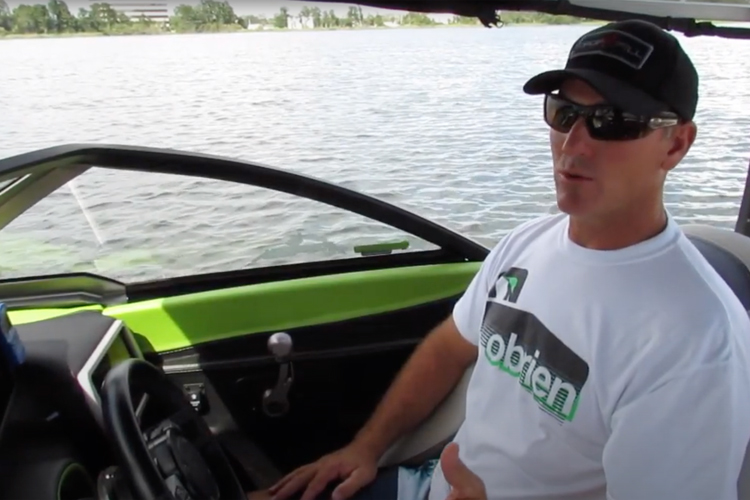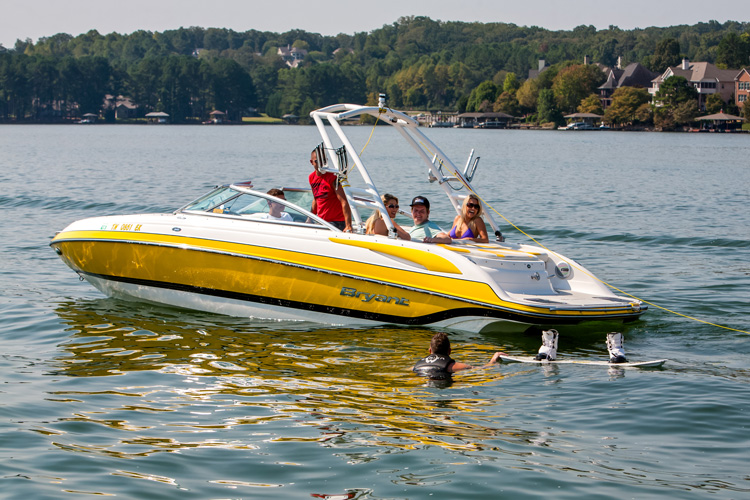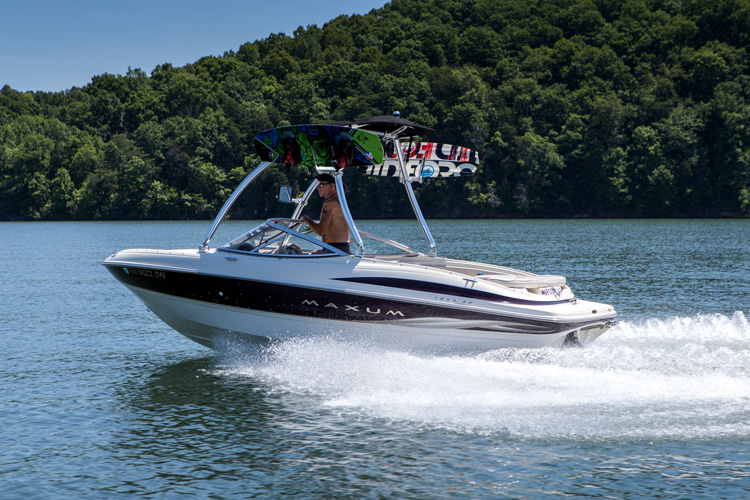Wakeboarding is one of the most popular watersports out there, and if you’ve ever watched a wakeboarder or participated in the sport yourself then you likely understand why. There are few ways to get a better adrenaline rush on the water than riding a wakeboard being towed behind a boat, and we feel you. That’s why we have put together a series of guides dedicated to helping you learn almost everything you need to know (at least the basics) to get started pulling a rider on the water.
Towing a rider can be performed on a variety of boats in a number of different areas, which makes it a pretty ideal watersport. That said, there are definitely things to know and look out for before you go blindly into pulling someone behind your boat. This page is designed to give you a brief overview of what you can find in our more detailed guides by giving you the key points and highlights of what you need to know. Some things you might already know, some things might be new, and sometimes we might recommend checking local regulations further, but this is a good starting point for any new driver.
Boating Etiquette

No matter where you drive your boat, there’s going to be an expectation when it comes to following boating etiquette. This stays applicable when you’re towing a rider – in fact, you have to follow even more rules because when you’re towing you have a responsibility to keep everyone safe and protected from harm. Ultimately, you want to consistently do your part to be safe and courteous to passengers and other boats around you. To do this, start by following these rules of boating etiquette (and know that some things may vary depending on your local regulations):
- Know the Rules of the Ramp: Boating etiquette certainly isn’t restricted to only when you’re out on the water. Before you launch, make sure you have everything set to go on your boat. It helps save time and makes sure nobody is waiting for you to head out or back in. This is especially important at busy times.
- Take Care on the Water: When you’re on your water, you should be sure to pay attention to things such as speed limits and your wake. You should also be mindful of what is around you, including structures and other boats, and be courteous as you pass others by giving them a wide berth.
- Be Friendly: Friendliness among boaters is a proud tradition. Make sure you’re friendly to others around you and pick up after yourself to keep the areas clean. This is a great way to fully enjoy everything the water has to offer.
- Follow the Rules: There are established rules wherever you plan to go boating. Do some research before heading out on the water to make sure you know what those are. These often include things such as speed limits.
Choosing the Right Speed

There may be speed limits wherever you choose to ride that you should always pay attention to and abide by, but how do you know how to choose the right speed when towing a rider? Choosing the right speed is a sort of harmony between what the boat is capable of, what the driver is comfortable with, how experienced the rider is and what tricks are going to be performed. A word of caution before choosing a speed – the driver should know their boat’s limits, and their own. From there, they should talk to their rider to figure out a game plan. Here are some key tips for setting your speed:
- Know Your Rider: Your rider should be able to tell you what skill level they are at in their wakeboarding journey. Whether they are a beginner or a seasoned rider is going to change where you set the speed of the boat. As a general rule, a beginner is going to need slower speeds and less maneuvers as they get a feel for the water. An advanced rider, on the other hand, might be ready for quick speeds at planning and driving patterns like the double-up.
- Getting Started: Wakeboarding isn’t like water skiing, so if you’ve ever towed a rider skiing then you might need to change how you get the rider up. The key difference is that with skiing, you need to hit it for the rider to get up, but with wakeboarding you need to accelerate slowly. Wakeboarders can easily get up at speeds barely above idle by letting the rope gently pull them. The only time you might need a little speed to help them get up is if you’re towing a beginner wakeboarder, as they tend to fight the pull. Overall though, you can go at slower speeds and wait to go faster once the rider is up and has found their balance.
- Setting the Right Speed: Once you’re on the move your speed is going to depend on the skill level of your rider. The following are some general recommendations, but keep in mind that every boat, driver and rider is different so there is going to be some variation in speed depending on the circumstances. For a beginner rider learning how to wakeboard, you want to plan to go somewhere between 12 and 15 miles per hour, with 12 always being the minimum. Larger beginner riders may need more speed just to stay on top of the water. Speed then goes up with experience level, with most riders staying around 18-20 miles per hour for most wakeboarding tricks you see. For really advanced riders, however, you may need to go as fast as 24 miles per hour, but keep this set as your maximum speed.
Why is between 18 and 20 miles per hour the recommended speed for most riders? At this speed you will notice that the boat creates a much cleaner wake, not mushy, soft wakes that crumble beneath the wakeboard. This makes it easier for riders to perform tricks.
Boat Driving Patterns for (Beginner) Wakeboarding

When you’re driving a beginner wakeboarder, you may want to do more than just watch your speed. You may also want to stick to more basic boat driving patterns. The following patterns are ideal for riders just getting into the watersport, but they’re also some of the most popular for more seasoned riders as well. So, once you have these mastered they’re patterns you can keep driving for a long time to come! Before we get into the patterns, though, it should be noted that each of the ones we share here have three main objectives:
- Create a straight, clean wake.
- Avoid bringing the rider into messy, choppy waters.
- Assist the rider in staying control of their speed throughout turns.
What you see here are brief versions from our more comprehensive driving pattern guide. We will start by introducing you to the concept of running a straight line, followed by turning the boat and two more popular driving patterns.
- Running a Straight Line: Get to the point where the boat and wakeboard are planning, set your sights on the horizon ahead, maintain a constant speed and keeping going straight. This creates a clean wake for the rider.
- Turning the Boat: When turning the boat you don’t want to do what is referred to as a power turn. In other words, you don’t want to turn at high speeds by hitting the throttle. Instead, you want to pay attention to where your rider is and start with a pre-turn in the opposite direction of where you ultimately want to turn. When you turn you want to draw an ellipse.
- The Dumbell-Shape Course: To start, run a straight line. Then, make a quick pre-turn before steering 180 degrees in the direction you want to go. This should result in a large, wide arc. Once you’re out of the turn, drive back toward the wake that was just made and slow down as you go through the rollers. Then you can continue running a straight line in the direction where you started and do another arc to complete the course.
- The Wide Oval Course: To complete this course, drive the boat in one direction in a slight turn until an oval shape is created. This pattern is fun as it sends rollers to the center of the oval, but is a driving pattern on this list that isn’t necessarily recommended for new beginners.
Should you wakeboard with an inboard or an outboard boat?

We have mentioned that some aspects of towing a wakeboarder will change depending on the boat you are driving. Maybe this got you thinking – what kind of boat is best for towing a rider? There are a lot of opinions on this, so we will keep it general here. Overall, there are a lot of different boats that can pull a rider, and which one is the best will depend on preference. However, when you’re talking about choosing an inboard, outboard or inboard/outboard boat, there are some recommendations to be made.
First, consider what happens when you are towing a rider. For wakeboarding and other sports, the rider is being pulled behind the boat. For wakeboarding specifically, the rider is being pulled within close proximity of the boat, sometimes within just feet of the transom. With an outboard boat, this could put the rider at risk being so close to the propeller. This concern is pretty much eliminated with an inboard boat, which is why they tend to be the preferred choice for anyone looking to tow a rider.
That said, as long as you follow safety guidelines and take precautions, your choice is up to you. Just be sure to plan ahead and be prepared, as you should do any time you head out on the water!
How to Pick Up a Fallen Rider

Whether you are trying an advanced move or have a beginner wakeboarder wipe out, it’s important to know what to do when a rider falls into the water. A lot of drivers instinctively want to hit the throttle, turn around and get the rider, but this is what you should definitely NOT do. This is dangerous for the rider. Here is what to do instead:
- Slow to a near stop as soon as you know the rider is down.
- Slowly turn around.
- Head back to the rider at idle speed.
- Once you are near the rider, approach them from the downwind side (so you are not blown too close to them).
- Let the rider swim up to the boat, do not drive all the way to them.
- Shift into neutral and turn off the engine as the rider gets close enough to board the boat.
After you have the rider back in the boat you will want to check and make sure they are unharmed. If you have a medical kit on board, this is usually enough for some minor scrapes that might be experienced on the water, but more significant injuries may require attention from a professional. In this case, you will want to have access to a mobile device or radio to get help.
How to Drive a Double-Up

A double-up is one of the most crowd-pleasing, adrenaline-boosting wakeboarding tricks there is, but that also means it is one of the most complex. To successfully pull off a double-up, there needs to be synchrony between the driver and rider. This means constant, clear communication between two experienced individuals that know what they are doing. To drive a double-up, you want to keep the boat speed steady while running straight and turning, bring the speed back up at the end of a turn and drive perpendicular to the line the boat had been driving to prevent sending rollers down the rider’s path. Here’s what to do to actually pull it off:
- Start with a pre-turn in the opposite direction of where you want to go.
- Drive in one direction and let the wake build into rollers.
- Get far enough away for safety
Enjoy the Ride!
Wakeboarding, and all watersports, are all about having a good time out on the water. So, while you are out there, remember to enjoy yourself. It may seem like a lot to learn and keep track of right now, but over time it will become second nature to you so you can just focus on enjoying the experience. We hope that this guide has helped give you a starting point for your new wakeboarding adventures as you learn to tow a rider!













Comments